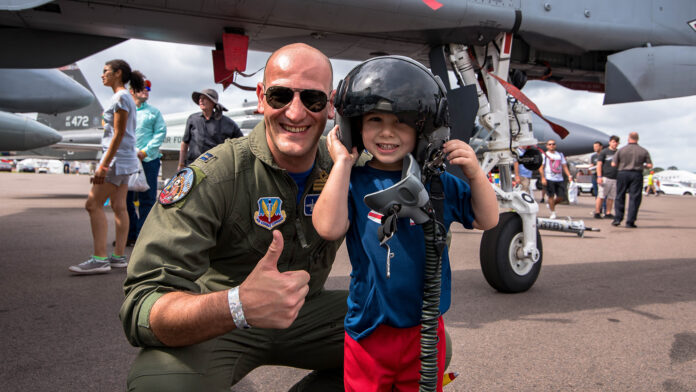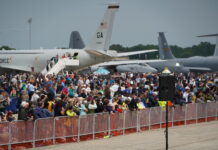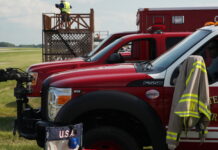Unless you’ve been living under a rock, you’ve heard the statistics. The world is looking at debilitating pilot and aircraft maintainer shortfalls that will likely cripple the aviation industry if dramatic steps are not taken very soon to disrupt current trends.
Today, 2.75 million passengers fly on 44,000 flights in the U.S. every day. Worldwide, experts expect the airline business to grow from 4.3 billion passengers per year in 2018 to nearly 8 billion in 2036.
But that additional need combined with the retirement of current pilots is expected to create a huge shortage of pilots and maintainers during the next 20 years. Boeing estimates that 800,000 new pilots will be needed worldwide during the next two decades with the U.S. requiring approximately 117,000 new pilots.
The need for maintenance personnel is just as urgent. Aviation industry experts estimate that 775,000 maintainers will be needed around the world by 2039, with the U.S requiring 189,000 by 2045.
And, of course, that lack of supply for the airlines is impacting all other areas of aviation. For example, the U.S. Air Force, U.S. Navy and U.S. Marine Corps report that they are currently 25% short of the number of needed fighter pilots. And that shortfall is likely to get larger during the next few years.
The threat is real, but the aviation community has recognized it early and is taking aggressive steps to address the problem.
Recently, I sat on a panel of regulators, legislators and association representatives at the Wingnuts Flying Circus Air Show in Tarkio, Missouri. Hosted by Sam Graves, ICAS member and Ranking Member of the Transportation and Infrastructure Committee in the U.S. House of Representatives, the town hall-style presentation started with comments from Acting FAA Administrator Dan Elwell, who tied the excitement and fun of air shows directly to our nation’s efforts to address the coming pilot shortage. He observed that air shows are the ideal way to get children and young adults excited about aviation and interested in making it a career.
And he’s right. We are in the perfect position to help with an enormous problem and imminent threat.
For many ICAS members, aviation is both a vocation and an avocation…a job and a life-long passion. Their concern about the future of aviation transcends their business or personal interests. Supporting and protecting aviation – and especially general aviation – is how they’re wired. So, not only are we well-positioned to help with this emerging problem; most of us have a deep personal interest in doing so.
“Workforce development” is the term used to broadly capture the many different efforts underway to promote careers in aviation. For example, BuildaPlane.org is a non-profit organization that promotes aviation by giving young adults the opportunity to build or restore an aircraft. AOPA, EAA, GAMA and many other aviation organizations have developed programs to encourage and help those interested in learning to fly or begin a career in aviation. On behalf of the entire aviation community, all of these groups are doing important, difficult work and committing vast resources to addressing the coming pilot shortage.
But none of them have the kinds of venues we have in the air show industry to both entertain and inform the general public. Each year, between 10 million and 12 million spectators attend air shows in the U.S. ICAS research and analysis suggests that between 22 and 28 percent of them are children or young adults under the age of 18. They have self-identified as aviation enthusiasts. They spend an average of 4.5 hours at the air show. While they’re there, they watch the flying displays, tour the statics and visit the exhibits set up on the ramp. And they and their parents are already thinking about possible well-paying, stable, exciting and enjoyable careers they might pursue in five, ten, 15 years. In all likelihood, there is no better tool available to address the aviation workforce development challenges than the 300+ air shows held in the U.S. and Canada each year.
And if you need proof, look no further than Sun ‘n Fun’s Aerospace Center for Excellence. The entire organization in Lakeland is now committed to training tomorrow’s aviation professionals and they have demonstrated not just that they can move the needle with what they are doing, but that air shows are an appropriate and effective vehicle for addressing the personnel needs of the aviation business.
So, the table has been set. The need is clear. The potential solution has been identified. What will you now do with this information? What will WE do together?
I believe that the time is right for the air show industry to “missionize” our events (Thanks to air show announcer Matt Jolley for coming up with that term). What we needed and – I would argue – now have is a clear purpose and sense of urgency. During the coming months and years, our collective challenge is to make the investment of time and energy necessary to realize this potential…to give additional purpose to our industry and our events by helping them address what is arguably the biggest challenge facing the aviation community in more than a generation.








